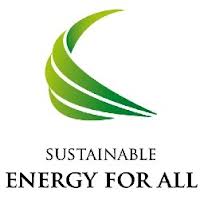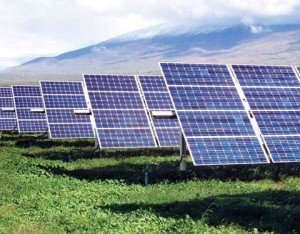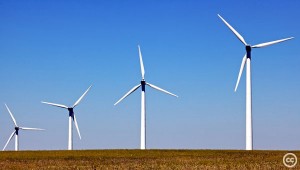Sustainable Energy For All (SE4ALL)
A global Action Agenda / Sustainable Energy For All / April 2012
 The aim of the SE4ALL initiative is to promote the major investment needed for renewable energy to be scaled up across the world.
The aim of the SE4ALL initiative is to promote the major investment needed for renewable energy to be scaled up across the world.
This report argues sustainable development is only possible with sustainable energy. Energy is fundamental to future economic growth, reducing poverty and securing a healthy environment.
Read report
“Sustainable energy—energy that is accessible, cleaner and more efficient—powers opportunity. It grows economies. Lights up homes, schools and hospitals. Empowers women and local communities. And paves a path out of poverty to greater prosperity for all”.
Three objectives to achieve SE4ALL and sustainable development
The objectives of the Sustainable Energy For All (SE4ALL) programme are to ensure by 2030:
- Universal access to modern energy services
Why: Currently 1.3 billion people do not have access to electricity. 40% of the world’s population use biomass (wood, coal, charcoal, animal waste) releasing toxic smoke which kills nearly 2 million people a year.
- Doubling the global rate of improvement in energy efficiency
Why: To reduce energy use, reduce energy costs, create jobs and provide energy security for countries that depend on fossil fuel imports.
- Doubling the share of renewable energy in the global energy mix
Why: Renewable energy is clean and inexhaustible. It already supplies 15% of the world’s energy from wind, water, sun, biomass and geothermal sources.
 According to SE4ALL current investment in energy is around US$1 trillion a year. Re-directing this investment to clean energy can lead to increased access, growing markets and improved competitiveness. They summarise: “the transition to sustainable energy may well be the biggest business opportunity of the 21st century”.
According to SE4ALL current investment in energy is around US$1 trillion a year. Re-directing this investment to clean energy can lead to increased access, growing markets and improved competitiveness. They summarise: “the transition to sustainable energy may well be the biggest business opportunity of the 21st century”.
The report says guaranteeing access to energy facilitates the achievement of many other development goals including
- Eradicating poverty
- Increasing food production
- Providing clean water
- Improving public health and education
- Creating economic opportunities
- Empowering women
“These actions will do much to eradicate energy poverty. They will also lead to sustainable growth, the development of new markets, the creation of new businesses and jobs, and increased global prosperity. The opportunities amount to trillion-dollar markets.” [Chad Holliday and Kandeh Yumkella, Co-Chairs of the High-level Group on Sustainable Energy for All]
How to achieve SE4ALL
A core part of the initiative is for the United Nations to bring together different stakeholders to establish public-private partnerships between government, business and civil society.
SE4ALL calls on different stakeholders to make the following commitments:
- Companies: make operations and supply chains more energy-efficient; form public-private partnerships
- Investors: provide initial seed money for clean technologies and invest in both on and off grid solutions
- Governments and international institutions: develop national energy plans and targets, provide financial support, and remove counterproductive tariffs and subsidies.
- Industry, government, and academia: contribute new research.
- Civil society: train people, conduct advocacy, offer technical expertise, and encourage transparency.
 The report says for SE4ALL to be successful public funds should be used to leverage private investment. The enabling conditions for significant private sector investment should also be fostered by addressing regulatory issues.
The report says for SE4ALL to be successful public funds should be used to leverage private investment. The enabling conditions for significant private sector investment should also be fostered by addressing regulatory issues.
There are several sectoral Action Areas including:
- Modern cooking appliances and fuels
- Distributed electricity solutions
- Grid infrastructure and supply efficiency
- Large-scale renewable power
- Industrial and agricultural processes
- Transportation
- Buildings and appliances.
There are four enabling Action Areas:
- Energy planning and policies
- Business model and technology innovation
- Finance and risk management
- Capacity building and knowledge sharing
Read report
See also SE4ALL A commitment to a sustainable energy future
————————————
This summary was prepared by Why Green Economy?. The views expressed have been paraphrased. See the original source for more information.

Leave a Reply